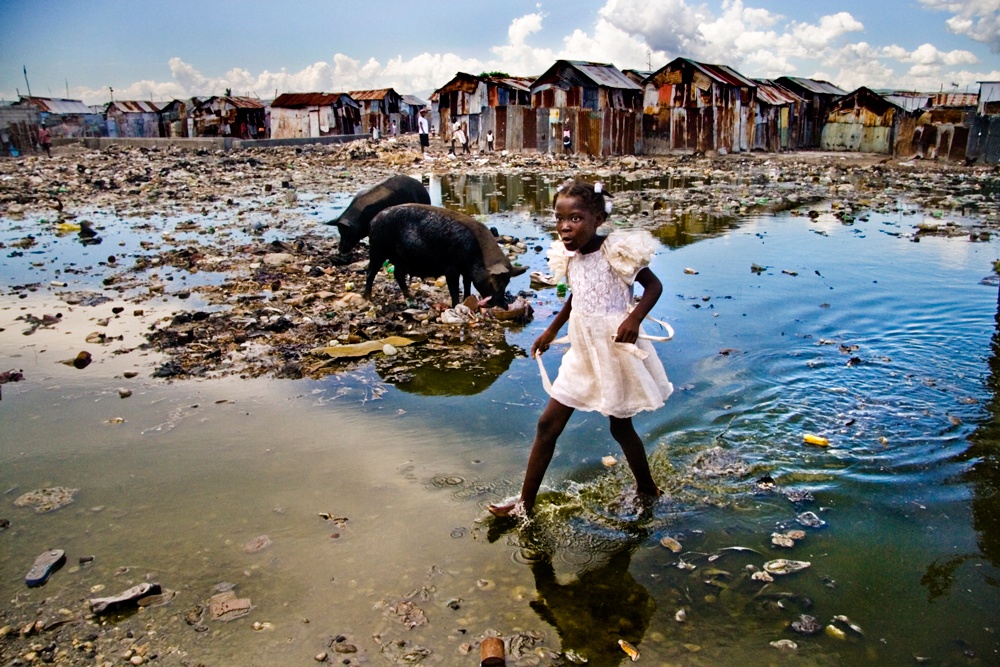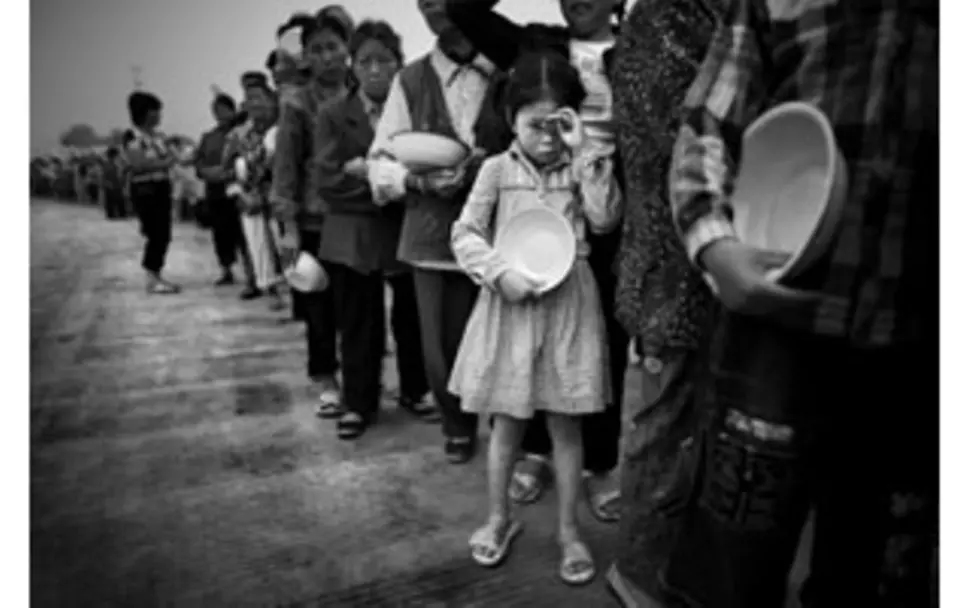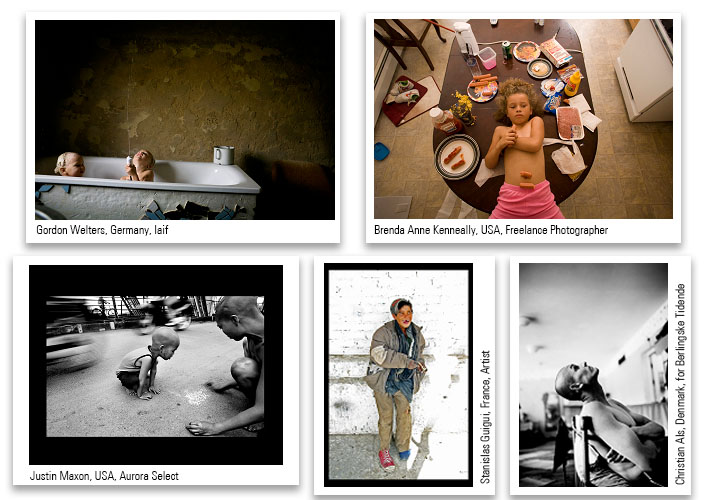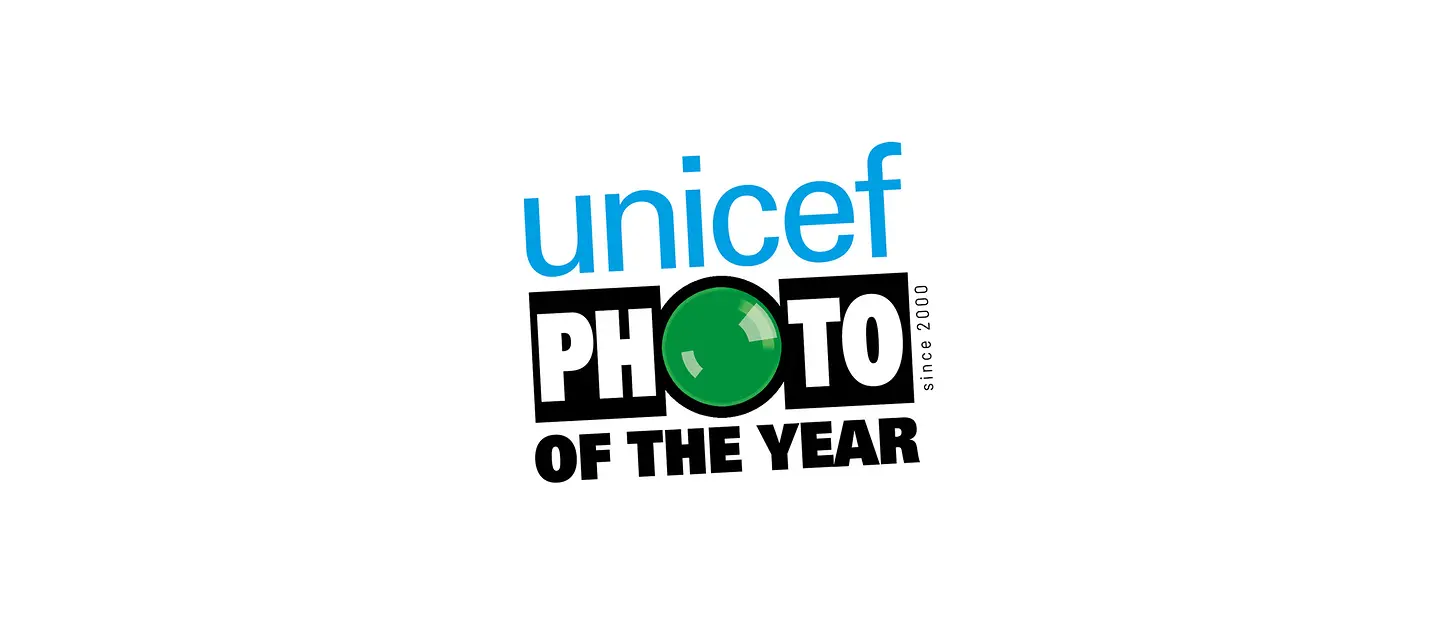UNICEF Photo of the Year 2008
Each year, UNICEF Germany grants the “UNICEF Photo of the Year Award” to photos and photo series that best depict the personality and living conditions of children worldwide in an outstanding manner. Here are the winners 2008.
Alice Smeets
Surviving in Haiti

The 21-year-old photographer, Alice Smeets, from the city of Eupen in the German-speaking part of East Belgium, is the youngest winner in the history of the contest.
For five hundred years misfortune and terror have reigned in Haiti. First it was colonialism and slavery, then came the dictators. After that followed chronic political instability and hurricanes. And throughout all that: hardship, distrust, treachery, poverty, dirt, destruction, illness, tyranny, oppression, persecution, death.
People live unprotected in stinking and burning waste, without work, without reliable sources of energy, without drinkable water, without clean air to breath, without money for their next meal. In the hovels the poorest of the poor resort to eating dirt simply to fill their stomachs. In a setting like this, a little girl in a white dress seems to be a frightened angel that finds itself in the underworld and nevertheless determined to fight for a little bit of beauty.
This glimpse of how hell could look, overwhelmed the young Belgian photographer, Alice Smeets, on her first trip to Haiti. The more time she spent in the country, however, the more this feeling eased, to be replaced by compassion and a strong desire to use her photography to raise awareness for the oppressed and humiliated.
Alice Smeets says: “ I am often asked why I always want to keep returning to Haiti instead of discovering new countries. Everyone has a choice in life. Philip Jones Griffith (photographer for the Magnum Agency, who passed away in 2008) taught me something important during my time as his assistant: photographers can either report on a a wide range of situations in a cursory fashion, or they can carry out a deep and intensive examination of just one setting. Both are options, but the latter gives you the opportunity to continuously create visual statements that can hopefully lead to assistance for those suffering.
2nd Prize for Oded Balilty, "The Earthquake in China"

The rigor mortis affecting the region has spread to the psyches of the living. At least 70,000 people fell victim to the apocalyptic earthquake on the 12th May 2008 in the Chinese province of Sichuan. 15 million houses collapsed. Since then almost 6 million people have been living in emergency accommodation. This catastrophe was followed by an earthquake of the soul that caused no less suffering.
The inner world of the survivors has been shaken to its very core, damaged and traumatized, and is now haunted by the demons of the horror that they survived. Their outside world also lacks firm foundations. Amidst all this, the Israeli photographer, Oded Balilty, only rarely met a hint of childish light-heartedness.
3rd Prize for Balazs Gardi, "Collateral Damage"

For whom is the Korengal-Valley in the Kunar province of northwest Afghanistan the most dangerous place in the world? Is it the villagers who find themselves between the fronts? Or the Taliban and Al-Qaeda fighters? Or the American Soldiers? The risk is spread gruesomely evenly among all these groups.
The Hungarian photographer, Balazs Gardi, moves as a neutral observer through this landscape that is so foreign to him and is shocked by every dead or injured person that he comes across. He asks himself whether this madness will ever end, for he can see no sense to the endless suffering.
Children in Afghanistan are both unintentionally and intentionally victims of the violence. They find themselves, for example, between the fronts when Nato-led security forces move against insurgents. Taliban fighters intentionally attack schools. In 2008 alone, there were 256 violent attacks up to the middle of November – mostly on schools for girls. 58 people died in these attacks.
Honorable Mentions



